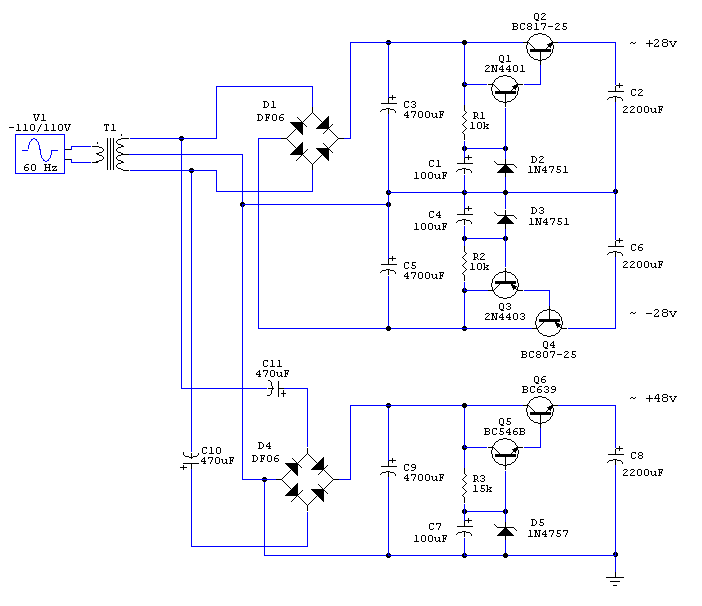[quote author="Svart"]One point of mention that Bcarso points out (i think, i read it quickly..) I was looking to regulate without the use of darlington/emitter-follower arrays. I only did some quick looking but i believe there are plenty of devices that should work well here.
Bcarso and I were talking about the SiC diodes.. I think this would be a perfect place to use them!
As for the R in series with the bases.. what do you suggest for size? usually i see 100 or 1k for base/gate series Rs.
if anyone even thinks of using a TL431 in place of a zener, I will personally slap you. I have had nothing but issues with them unless you like building crappy unbranded chinese switchers.. :green:
Bcarso, in the situation where the output V falls slower than the input and you get a reversed biased BJT, would you suggest a (fast)diode between the emitters and the output caps to isolate them from the caps? I have not simulated or tried this yet, it's just a quick idea..[/quote]
For the series R it will depend on the size of the device and hence the rating. It is more of a pulse energy issue which is mostly undiscussed in datasheets, and this in turn will depend on how large the zener (or other reg.) cap is. Ballpark I would say is 50-100 ohms for a MJE172/182 device and a 220-470uF cap.
Don't know what your problems have been with 431's, although they do get abused in the standard offline switcher when paired with the simple optoisolator. I have used literally millions of them in a more benign environment, as a voltage reference with a good long tau R-C filter afterwards feeding an error amp, and had no problems. They are, like most bandgap-based references, somewhat noisy and prone to oscillation depending on current and capacitive loading. The manufacturers tell you about this, and at least the reputable ones are pretty accurate about the behavior. But they are being made by all and sundry now and getting down to about 6 cents in quantity, so who knows what horrors lurk.
There are ways to make quieter bandgap refs out of discrete Q's. Zener noise iirc is all over the map but I haven't looked at them recently enough to be quantitative. When I needed a really quiet ref I used a JFET CCS biased at the ~zero-tempco point and developed a voltage across a resistor, and buffered this with a good amp. The whole shooting match was oven-stabilized---clearly not too practical for everyday use! But it did way outperform anything that was out there, and I suspect it would hold its own today as well.
Back to the e-follower regs at hand: to protect the potentially reverse-biased junctions without other losses the best thing is to place the diodes across rather than in series. They don't have to be especially fast. They shouldn't be any larger than they have to be since they are capacitive and this can only slow things down in normal operation---but these are small effects.



